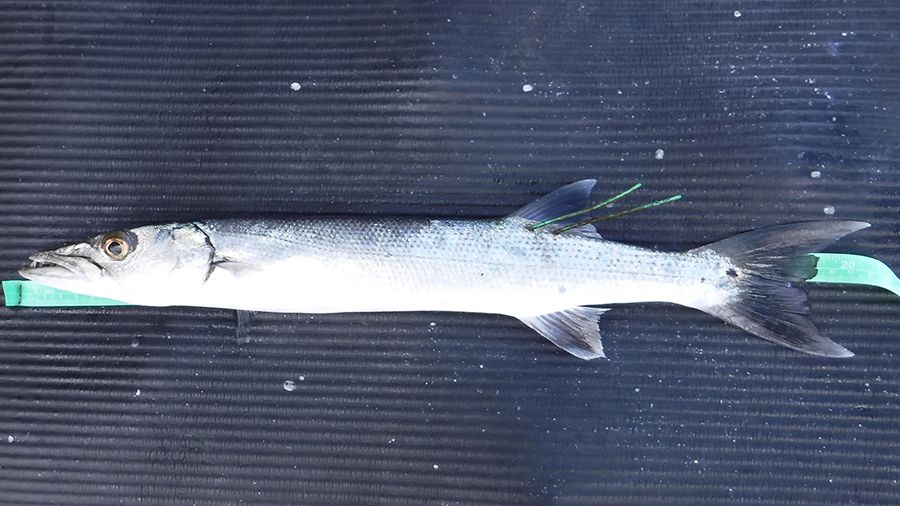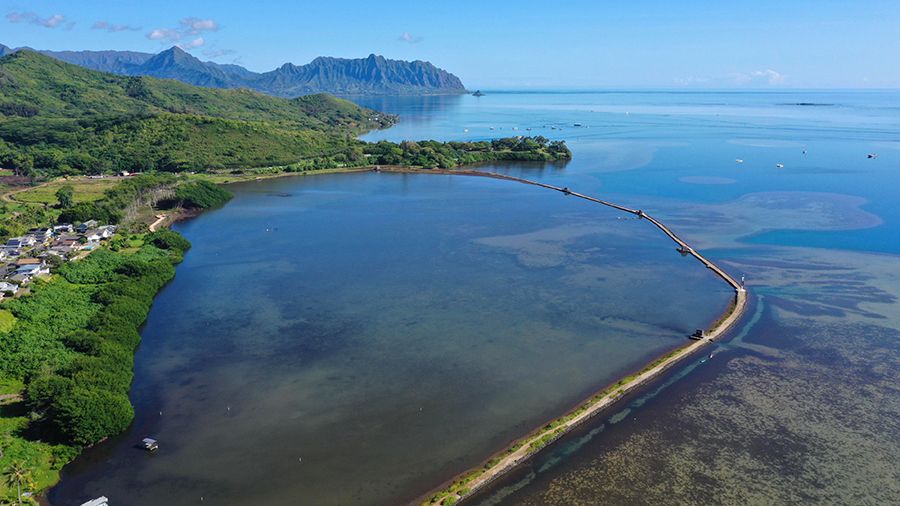HONOLULU — Researchers from the University of Hawaii at Manoa, University of California at Santa Barbara and Paepae O He‘eia have found that predatory fish species such as jacks and barracuda prefer the invasive Australian mullet over native mullet, moi and awa at He‘eia fishpond.
This finding suggests that native predatory fish may provide a form of biocontrol on populations of the invasive mullet species. The study was published in “Aquaculture, Fish and Fisheries,”
Prior to western contact, traditional fishponds, or loko i‘a, played an essential role in food production for the Native Hawaiian people, according to an article on the University of Hawaii Sea Grant program website. Researchers estimate at one time there were up to 488 fishponds across the islands, providing a sustainable food source for many local communities.
The focus was on cultivating plant-eating fish that thrived in fishponds, such as native mullet, moi (Pacific threadfin) and awa (milkfish). However, predatory fish such as jacks and barracuda targeted the native fish, and would need to be periodically removed. The Australian mullet was introduced to Oahu waters in the 1950s, making its way into fishponds and altering the fishpond’s food webs.

Erik Franklin, UH Manoa’s Hawaii Institute of Marine Biology associate research professor and study co-author, said seeing the amount of invasive mullet in the predatory fish diet was unexpected.
“Our study showed that the introduction of invasive Australian mullet altered the diets of the native predatory fish in the fishpond, which really expanded our understanding of the food web interactions in these systems,” said Franklin in a UH news release. “The jacks and barracuda seemed to preferentially feed on the invasive mullet rather than native mullet and moi. This would help control the population of the invasive species which competes for resources with the native fish.”
The research studied the number of predatory fish and their prey in He‘eia fishpond using tag-recapture experiment, genetic barcoding and other methods to track the population of jacks and barracuda in the fishpond and their diet composition.
Nonprofit organizations around the islands are working to restore loko i‘a to benefit communities and introduce younger generations to the practice of building and maintaining them. Loko i‘a could be one way to increase food security.
“The restoration of functional Hawaiian fishponds represents a promising opportunity to increase local seafood production, but there is still much to learn about the ecology and dynamics of fishpond communities,” said lead author and UH Manoa Marine Biology Graduate Program graduate student Anela Akiona. “A functional fishpond would contribute to enhanced island food security that can supplement catch from fisheries and other aquaculture operations.”
Sarah Yamanaka covers events, environmental and community news for Spectrum News Hawaii.





